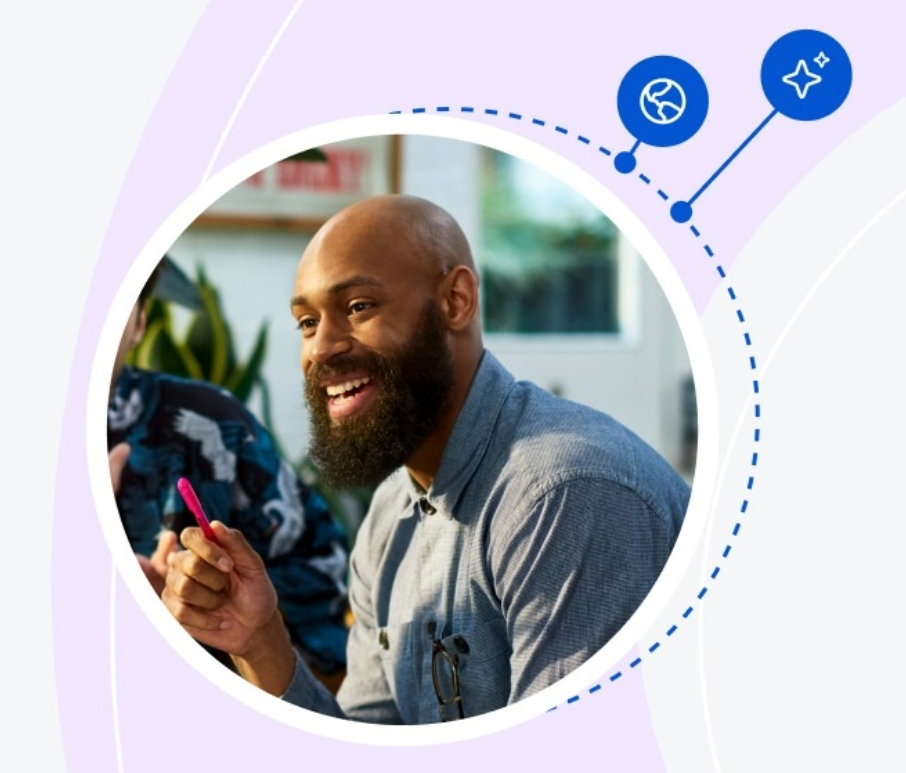Enhancing Student Support Strategies for Companies
In the wake of the COVID-19 pandemic, corporate learning has become a vital tool for employees. Ongoing student support helps your employees stay on top of technological innovations and market trends while progressing toward their career goals.
![[Featured Image] A young professional explores student support options on her mobile device as she strolls the hall of her workplace and explores her company’s corporate learning program.](https://d3njjcbhbojbot.cloudfront.net/api/utilities/v1/imageproxy/https://images.ctfassets.net/2pudprfttvy6/3iGUijWfwXcZnR8B5kVPyJ/f74713704a85a276b0621c3bba0702d7/GettyImages-1486153367.jpg?w=1500&h=680&q=60&fit=fill&f=faces&fm=jpg&fl=progressive&auto=format%2Ccompress&dpr=1&w=1000)
As corporate learning becomes increasingly important across industries, ensuring your workers have pathways to build foundational competencies sets the stage for their professional growth and provides opportunities for employees to excel in other areas of their personal development. One of the best things business leaders and their companies can do for their workforce is to create a positive learning environment in which your employees feel supported in their learning journey and are empowered to pursue areas of interest aligned with your organizational mission.
You can facilitate support for corporate learners in several ways. For example, choosing courses that integrate naturally into your workforce can enhance employee engagement while boosting organizational productivity.

Why corporate education benefits companies
You may be well aware of how corporate education benefits employees—enhancing skill sets, boosting career growth, increasing efficiency in their job responsibilities—but how does corporate education benefit companies? Moreover, why is building an environment of learner support important?
Supporting corporate education benefits organizations in several ways. For example, engaged employees who feel their organization supports their professional growth are less likely to leave the company. Thus, corporate learning can help with any growing employee retention concerns.
You can also tailor corporate education programs to address specific skills shortages within your company. This focus can directly impact productivity and efficiency and ensure your team members are well-prepared to meet their job demands.
When you invest in your employees’ education, you enhance the collective knowledge base of your workforce, increasing your organization's long-term competitiveness. This benefit particularly impacts industries where you learn alongside rapidly evolving standards. Well-educated employees can adapt more quickly to changes, which in turn helps your company respond more effectively to new challenges and opportunities.
Read more: Why Is Employee Engagement Important?
Examples of corporate education
Corporate education can take many forms, depending on company and employee needs. One form of corporate education you might already employ is orientation programs. Typically, orientation programs help new employees understand the company culture and role expectations. They also help them become familiar with how their position fits into the larger organizational structure.
You can also use corporate education programs to train employees on specific technical or human skills. Technical skills include those needed to directly complete job tasks or expand capabilities in a particular area, such as learning new software, analytical techniques, or financial prediction methods. On the other hand, human skills relate to employee behavior and intrinsic qualities. These skills include empathy, effective communication, and time management.
Depending on your corporate training goals, you can require employees to take certain courses or allow them to choose the ones that interest them most.
Key factors that create a supportive environment for students
To maximize the success of your corporate training program, you need to create a supportive learning environment. A supportive learning environment is one where employees feel they can comfortably express their thoughts and ideas, even when it challenges the status quo.
To foster an environment like this, encourage open communication in your employee base by creating channels where individuals can freely share and debate ideas. It helps to recognize and appreciate different perspectives within the team, enriching the learning process by incorporating a wide range of viewpoints.
You can do this with lunch-and-learns, dedicated team collaboration time, digital discussion boards, or any method that suits your infrastructure and company culture.
If your workplace has yet to incorporate methods that encourage this type of environment, you might need to examine your current policies and practices. You can then take steps to remove any outdated policies that are creating barriers.
How to support employee career development
In addition to creating a supportive learning environment, you can implement concrete learning processes, providing a supportive pathway for employee development. You can do this in many ways, including:
Encourage employees to assess their skills and identify areas for improvement regularly. This self-reflection will help employees tailor learning programs to meet their unique requirements.
Build clear and achievable career pathways that guide employees in advancing within the company.
Ensure middle and senior management commit to supporting employee development. This buy-in helps create a supportive environment starting at the top.
Understand employees’ motivation and why they are pursuing learning opportunities. Using this, you can tailor material accordingly.
Source high-quality learning platforms and relevant training materials for your learning initiatives. Make sure your employees have access to the latest concepts and tools within their field and provide opportunities for them to stay abreast of current trends.
Build time into employee work schedules to learn new concepts and practice their emerging skills. This approach helps to ensure a healthy balance between work responsibilities and professional development.
Tie learning into tangible professional benefits. If employees see clear benefits of training, they are more likely to complete additional learning and development.
Read more: Unlocking Success through Employee Development: An In-Depth Guide
Challenges with creating a supportive learning environment
You might encounter several obstacles when implementing a new structure within your company.
Recognizing potential roadblocks and anticipating pushback can help you stay proactive and minimize resistance when creating your training plan. A few challenges commonly experienced when implementing learning plans include designating time for training, integrating high-quality training materials and learning resources, and aligning employee interests with overall organizational objectives.
Reflect on each challenge as you begin developing your learning plan and implementing supportive policies. Then, you can plan how to best minimize them within your workplace.
Implement corporate learning with Coursera.
Corporate education is an important element of an enduring workforce. It leads to benefits beyond individual employee growth while positively impacting the entire organization. You can employ many strategies to develop a supportive learning environment, including encouraging learning and discussion while providing adequate resources for learners and increasing buy-in with high-level management within your workforce.
Providing personalized learning materials for your employees at all levels is another way to support their goals and objectives. On the Coursera learning platform, you’ll find exciting courses and Specializations across various topics and skills. These include the Professional Skills for the Workplace Specialization, which can provide all employees with the basic skills required for professional success. Explore Coursera for Business to learn more.

This content has been made available for informational purposes only. Learners are advised to conduct additional research to ensure that courses and other credentials pursued meet their personal, professional, and financial goals.
